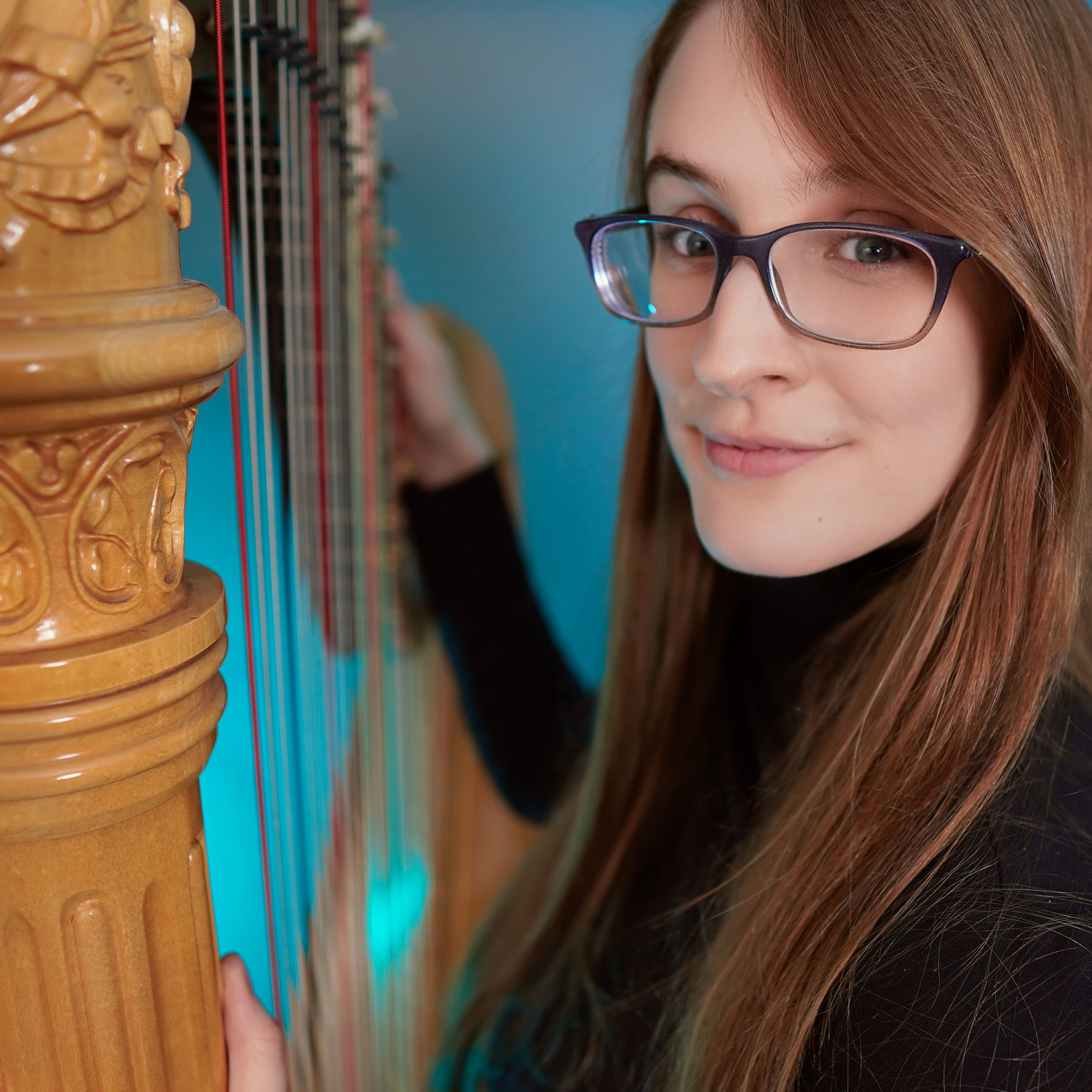
4 Practice Hacks for Smooth, Fast Arpeggios on the Harp
If you're struggling with slow, uneven arpeggios, you’re in luck! Today, I’m sharing four practice hacks you can implement right away to achieve beautiful, smooth, and fast arpeggios before you know it.
Hi, I’m Samantha, and welcome (or welcome back) to the harp studio! Let’s dive into these tips, but first, what exactly is an arpeggio? The term can have different meanings depending on where you are, but for today, we’re talking about a broken chord extended past what you can play with just one hand. These are the arpeggios where you alternate hands as you move up and down the harp.
This technique can feel daunting, but the way you practice makes all the difference. Let’s get into our first practice hack!
1. Play as Solid Chords
The first step is making sure your fingers know the shapes they need to be in. Instead of playing arpeggios as broken chords, practice them as solid chords in each hand.
For example, let’s use a G major triad arpeggio (G-B-D, repeating up and down). Play the three notes in your left hand all together, then the right hand, alternating as you go up and down. Start slowly, ensuring your fingers place all the notes at once. Then, challenge yourself to play these solid chords as fast as you can.
If you’re struggling with finger placements, add an extra step: after playing a chord, drop your hand away from the harp and bring it back quickly to the same spot. Repeat this until you can find the placements easily.
2. Practice Hands Separately
Our next hack might surprise you: practice the arpeggio with each hand separately. While it might feel like you need both hands working together to play the arpeggio, this actually reveals a common issue. If you're relying on the previous hand to guide the next one, your hand may not fully know where it's going—making it difficult to play fast and smooth.
Start by practicing the left hand alone, then the right hand. It may feel challenging, but that's a sign you're strengthening your arpeggio. While doing this, keep your hand close to the harp and aim for clean, controlled movements.
After practicing hands separately, try playing the full arpeggio. Notice if your hands are now finding their places more easily!
3. Focus on Transitions
The third hack is all about cleaning up the transitions when switching between hands. These transitions are often the points where people trip up or pause.
To practice smooth hand transitions, create a stopping point after the first note of each switch. For example, play the left hand, then right hand, then stop after playing the next note your left hand plays after moving. Gradually speed this up as you gain confidence, making sure the transitions are clean and solid.
4. Maintain a Stable Center of Gravity
Our last hack is more on the technical side. As you practice your arpeggio, take a moment to notice your body’s center of gravity. Are you leaning forward or back a lot? Which muscles are supporting you? Ideally, your body should stay centered, with your support muscles steady throughout the arpeggio.
If your body moves around too much, it becomes harder for your hands and fingers to stay controlled and accurate. Try grounding yourself by imagining the weight in your torso sinking into your hips and chair. Keeping your body stable allows your hands to move more freely and accurately across the harp.
Give These Hacks a Try!
These four practice hacks will help you build the foundation for fast, smooth arpeggios. Give them a try and let me know how they work for you!
And if you want to practice arpeggios in different keys and formats, take a look at my harp exercise ebook, filled with chords, scales, and arpeggios with harp fingerings and lever/pedal settings.
Happy practicing!
Get more free harp tips like this straight to your inbox by signing up for my email newsletter!

